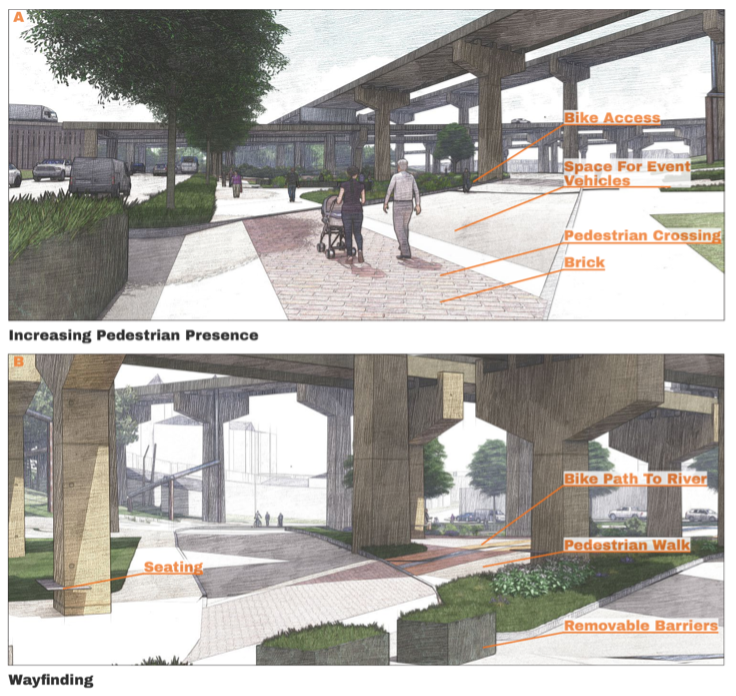Penn State student Elliott Kline wanted to capture the vibrant historical and cultural essence of the Etna and Sharpsburg boroughs while improving safety when he proposed re-designing a local community portal.

Kline, along with 12 others, was part of the Pittsburgh Studio, a course for third- and fourth-year landscape architecture students. For the past 13 years, Penn State professor Ken Tamminga has led the course, which connects students to a local community to address place-based issues through design. This past spring semester, students in the studio focused on the Triboro Ecodistrict of Millvale, Etna, and Sharpsburg.
“This studio is a great way to inspire students to get involved in a local, vibrant community and get hands-on tangible experience,” said Tamminga. “It also provides the community leaders with an elevated discussion and next steps to work toward their goals.”
At the start of the semester, students hosted a design charrette with community members and local leaders to identify goals and challenges for particular sites within Millvale, Etna, and Sharpsburg. The sites included:
- Etna–Sharpsburg Gateway — enhancing community entrances through gateway identity, civic-space opportunities, green infrastructure, and traffic calming
- Ganster and Garrard Streets — civic landscape improvements of isolated and vacant lots that engage with green infrastructure and small-scale demonstrations of renewable energy production
- Girty’s Woods — exploring the 155-acre woodland and identifying programmatic possibilities, sustainable trail systems, wayfinding, access, and more
- Heinz Memorial Field — identifying programmatic opportunities and park program updates through repurposing and regeneration
- Main and 13th Street Vacant Lot — repurposing a vacant lot as a link and node between Sharpsburg’s downtown, James Sharp Landing, and future access to the Three Rivers Heritage Trail
- North Canal Street — linear civic plaza programming and design with a focus on pedestrianization, green infrastructure, and traffic calming
During the virtual design charrette event, students and neighbors discussed issues and opportunities and identified things like safety, connectivity, and gathering space as the main priorities of the community.

Students then began to apply the skills and knowledge they learned throughout their landscape architecture courses and designed elements that they believed would improve these spaces. They also continued to collaborate with local partners as concepts were developed. At the end of the semester, they hosted a virtual open house event, inviting members of the community and local businesses to view their design presentations. More than 35 people joined the event and the engaging discussion, which included breakout rooms and a virtual poster session for each site.

